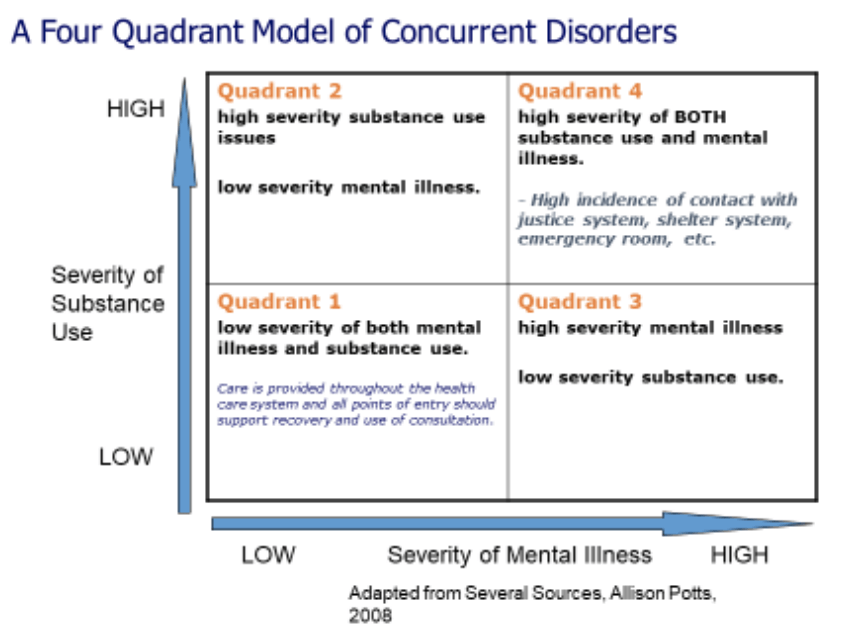The QUADRANT MODEL provides a frame- work for understanding the relative severity of co-occurring substance use/addiction and mental health concerns. Co-occuring condi- tions interact in a variety of ways. Very fre- quently, substance use functions as a coping mechanism for symptoms of mental health distress, including trauma, mood disorders and major mental illness. Substance use can also mimic and/or trigger mental health disorders, such as psychosis. Treatment is most effective when treatment plans identify how the conditions interact and impact a person’s daily functioning. This ensures that care is taken, that treatment for one condition does not exacerbate that other. For example, if a person is using substances as a coping mechanism for other mental health concerns, reducing or abstaining from sub- stance use before shoring up other coping skills may cause a decline in the mental health condition.
CONCURRENT DISORDERS
The QUADRANT MODEL provides a frame- work for understanding the relative severity of co-occurring substance use/addiction and mental health concerns. Co-occuring condi- tions interact in a variety of ways. Very fre- quently, substance use functions as a coping mechanism for symptoms of mental health distress, including trauma, mood disorders and major mental illness. Substance use can also mimic and/or trigger mental health disorders, such as psychosis. Treatment is most effective when treatment plans identify how the conditions interact and impact a person’s daily functioning. This ensures that care is taken, that treatment for one condition does not exacerbate that other. For example, if a person is using substances as a coping mechanism for other mental health concerns, reducing or abstaining from sub- stance use before shoring up other coping skills may cause a decline in the mental health condition.










